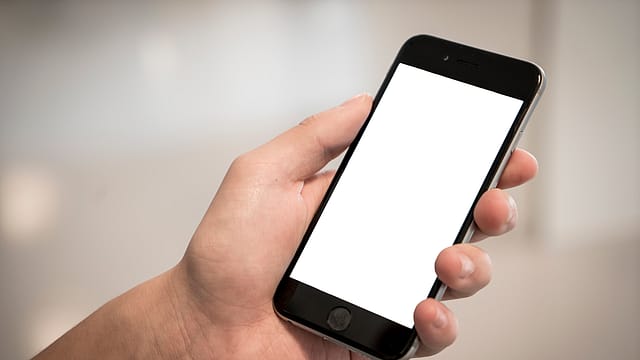Keeping up to speed with consumers
ADVERTISEMENT

The Indian technology sector has been thriving since the last decade. India has been a playground for global brands and has emerged as one of the key markets—especially for telecom and smartphone companies, with growing mobile phone penetration and faster connectivity.
Not just that, the Covid-19 pandemic has also changed consumers' lifestyles in various ways; as work from home is the new norm and remote learning the new saviour, current data needs have gone through the roof. Data from the department of telecommunications showed that Indians consumed an average of 307,963 TB or 307 petabytes (PB) of data between March 22 and March 28 this year. And according to a TRAI report, mobile users in India consumed 55 million TB of data in 2019. This proves that the new breed of mobile users in India need updated connectivity/speed at their fingertips.
These growing numbers also show that with each generation, the telecom sector has evolved to increase consumer convenience. For example, 2G helped individuals accomplish something as fundamental as sending/receiving text messages and increased voice capacity. The entry of 3G led to the popularity of mobile data, which allowed consumers to browse the Internet, run advanced applications, and stream videos. This led to faster and better connectivity but left consumers wanting more, leading to 4G, which delivered a better mobile broadband experience. Today, as a chunk of the population goes online, the need for super-fast data speeds and a digital-led lifestyle is becoming stronger.
Deploying 5G to build an ecosystem that supports network evolution
While the world is working towards the deployment of 5G as a technology and building an ecosystem around it, it is crucial for network infrastructure providers to ensure steady and effective network evolution over time. Technology is critical to India’s digital aspirations and 5G will be a distinct advantage to bring us one step closer to realising that dream.
January 2026
Netflix, which has been in India for a decade, has successfully struck a balance between high-class premium content and pricing that attracts a range of customers. Find out how the U.S. streaming giant evolved in India, plus an exclusive interview with CEO Ted Sarandos. Also read about the Best Investments for 2026, and how rising growth and easing inflation will come in handy for finance minister Nirmala Sitharaman as she prepares Budget 2026.
Network providers and infrastructure developers are working round the clock to meet this constant need for higher speed. For close to 60% of smartphone users, the best standard for 5G is to convey speeds faster than their current mobile networks. Video consumption is increasing day by day and according to a recent Cisco report, video will account for 82% of all internet traffic by 2022. Further, in the future, services such as AR/VR applications will put even higher requirements on network performance. The need for better customer experience means that operators must continuously adapt and expand network capacity.
High-consumption applications
What 5G will also bring along will be increased consumption of data-centric applications. For instance, ardent gamers will have the option to play quality games on their smartphones, aided by cloud-connected servers.
The technology will give a fillip to a whole ecosystem of immersive apps. From feature-rich navigational ones, faster file transfers, payment across devices to those monitoring your connected car—the whole app economy will take on an entirely different definition. In addition, accessibility to ultra-high-resolution video calls and seamless video streaming will complement consumers’ changing lifestyles, along with improved AR/VR experience for customer service. For example, brands such as Ikea and L'Oréal have customer service apps which use such new-age technologies to let customers experience placing furniture at home and trying different hairstyles, respectively.
Need for fast-charging technology
5G’s advanced connectivity will herald the dawn of a new connected era where devices are always in ubiquitous application scenarios, which brings with it higher energy consumption requirements. This presents new opportunities for charging technologies—a more efficient and safer technology will play a crucial role in the 5G era.
“Insights On the Go Survey”, a recent survey by CyberMedia Research (CMR) finds that consumers are not just interested in long battery life; they believe innovations in fast-charging technology play a more significant role in their daily lives. This is a vital takeaway. Batteries will need to adapt to new usage patterns and must be longer-lasting, lower-cost, and safer. Every new feature that consumers demand from their smartphones means more stringent demands on their phone’s batteries and charging technology. This has emerged as one of the key factors for users as well as smartphone brands to not only introduce fast-charging technology but also highlight the safety measures being taken to provide users with a safe, efficient, and convenient fast-charging experience.
Future usage scenarios include heavy app usage, cloud gaming, live video streaming, and sharing, among others. The fifth generation of cellular communication technology will bring a whole new architectural change in India. It will connect industries in real-time, helping drive more content consumption and build intelligent experiences.
Wireless connectivity has brought about a revolution in our lives and provides the lens through which we look at the world. Within this, smartphones have played a bigger role in taking connectivity to the next level every few years, with improved technology. With these constantly changing needs, a brand must be on top of its innovation game to meet consumers’ ever-evolving demands.
Views are personal. The author is vice president and R&D head, OPPO India.
